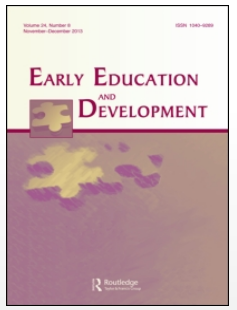From the abstract: "Effects on children’s school readiness were evaluated for 2 interventions focused on improving teacher–student interactions (coursework, coaching) implemented sequentially across 2 years. Teachers from public prekindergarten programs in 10 locations were assigned randomly to treatment or control conditions in each year. Children’s language behavior was observed during the coaching year: Coaching and the course each had positive impacts on children’s multiword language behavior. Treatment impacts on directly assessed literacy, language, and self-regulation skills were evaluated within an intent-to-treat framework for children taught by the participating teachers in the coaching and postcoaching years. Children demonstrated higher levels of inhibitory control in direct assessments when their teacher had received coaching the prior year. Teachers who received both coursework and coaching reported in the postcoaching year that children in their classrooms demonstrated greater levels of behavioral control. Treatment effects did not differ as a consequence of child, classroom, or program characteristics, and there were no significant effects on directly assessed literacy or language skills. Results suggest modest benefits for children’s language behavior and self-regulation for intervention(s) that improve the quality of teacher–child interaction."
2017
Pianta, R., Hamre, B., Downer, J., Burchinal, M., Williford, A., LoCasale-Crouch, J., . . . Scott-Little, C. (2017). Early childhood professional development: Coaching and coursework effects on indicators of children's school readiness. Early Education and Development, 28, 956-975.
10.1080/10409289.2017.1319783

